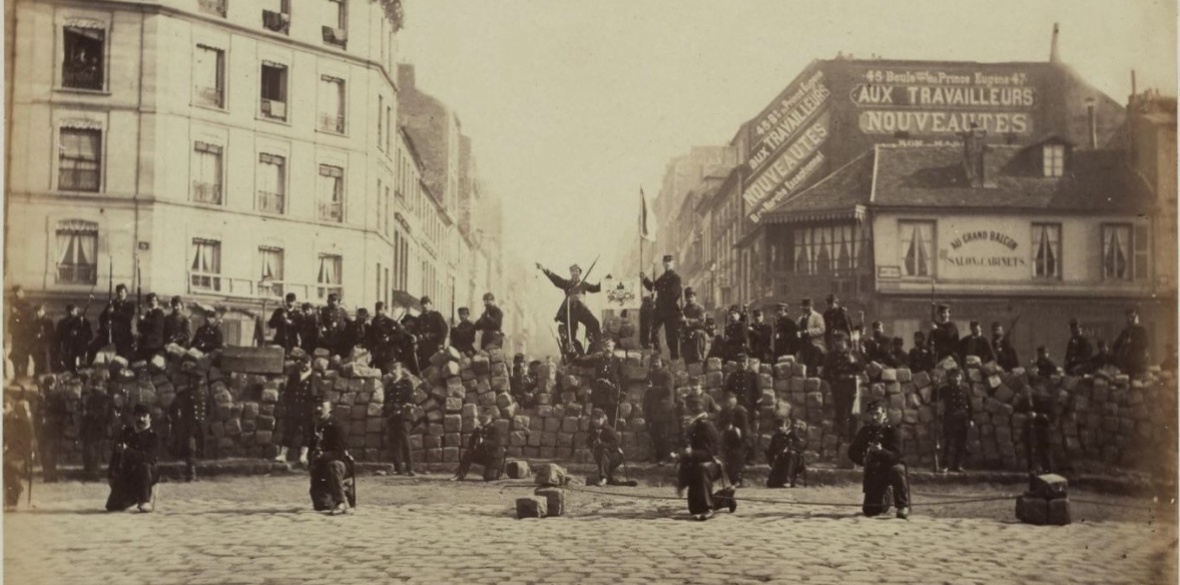This is the last article you can read this month
You can read more article this month
You can read more articles this month
Sorry your limit is up for this month
Reset on:
Please help support the Morning Star by subscribing here
SINCE the emergence in 2017 of the #MeToo movement, a real groundswell globally has taken hold which opposes violence against women, gender inequality and the stifling patriarchy fuelling capitalist domination and exploitation.
This transformative struggle is an essential dimension of the fight for emancipation and it is part of the long history of the workers’ and people’s movements.
In France, it is rooted in the peasant and pre-industrial revolts from the time of the Renaissance and successive centuries when the old regime was being eroded. They were times when women were not just participants in the movement but also the leaders of various uprisings. The same is true of the Paris Commune.
From the first to the last day of the Commune in May 1871, women “communardes” were not just part of a popular movement — they formed a mass movement. The part played by women, spontaneous and at times improvised, was crucial.
Not only were the communardes engaged in action, they often sparked it. They drew inspiration from the struggle of the women who gave the 1789 Revolution its political intent to abolish privilege. Women were in at the beginning of the insurrections of 1793 and 1795 and a few had already taken part in the revolutions of 1830 and 1848.
At each stage of this long and slow revolutionary process, women imposed themselves as political actors, even though their political rights were not recognised, including by their own comrades.
The question for them was to not allow themselves to be locked in the ideological straitjacket of the role of “reproducer,” remaining cloistered at home as passive recipients of the events which surrounded them. Although they did not have the right to vote and had no right of representation as they could not be elected, they were nevertheless entrusted by the Commune with leading responsibilities of strategic significance.
In Paris in 1870-1871, there were 62,000 women in the working-class neighbourhoods, who made up more than half of the city’s 114,000 work force and they represented the majority of the women who had been mobilised.
They aspired to improve their own conditions as well as wanting to contribute to the social dynamics of existing society and the new one that the revolutionary movement sought to bring into being.
Seeking to rupture, at a single stroke, bosses’ domination at work and male domination in the family and social relations, those women provided the commune with its full revolutionary dimension and its true democratic, social, secular, egalitarian and internationalist character.
Nathalie Le Mel and Elisabeth Dmitrieff, who helped launch the Union of Women for the Defence of Paris and the Care of the Wounded, declared their revolutionary aims: “We want the work so we can keep the profit. We do not want any more exploiters, any more masters.”
Women communardes took part in the battles at the barricades and in the rear they worked round the clock to help with caring and ensuring provisions were available. They swelled the ranks of rallies, processions, meetings and popular assemblies, where they spoke and debated as equals to men.
Like their 1793 predecessors, they intended to be citizens with full rights — the fundamental rights which are still today the basis of the social demands of working women and men. And they aimed to gain total social and economic independence — at the time, they were paid half as much as men.
They agitated for the right to divorce and recognition of common-law unions, the separation of church and state, the replacement of nuns in hospitals and schools and the creation of schools for girls, to guarantee their access to education as a universal and fundamental right.
From the improvement to their living standards and working conditions to the recognition of their place in society, they fought for social transformation and emancipation, opening the possibility of a classless society.
At the launch of the Women’s Union, they proclaimed: “Inequality and antagonism between the sexes constitute one of the bases of the power of the governing classes.”
The women suffered more than men from the stigma of class contempt and this is still true today. A crowd of fighting women, especially from the working class, was considered by the bourgeoisie and the dominant classes as more dangerous and threatening to order and power.
This is why they paid such a high price for their decisive contribution to the commune.
During Bloody Week and throughout the years of repression which followed, women were the equals of men as victims of the violence unleashed against them. They were killed, wounded, raped, imprisoned, executed, exiled or sent to prison.
Fully aware of the obstacles they faced, the women communardes led the political fight with great alacrity. One such was Andre Leo — real name Leodile Champeix — who, along with Louise Michel, led the demonstrations of September 8 1871 and demanded to be armed to fight the Prussians.
She wrote: “Do we believe we can make the revolution without the women? For 80 years now, we have been trying and we have not succeeded. Why is that? It is because many republicans have dethroned the emperor and the good God only to put themselves in their place: they need subjects.”
Jean Jaures, founder and editor of the socialist paper l’Humanite, underlined the point in an article marking the 36th anniversary of the commune: “It did everything in its power but history hardly repeats itself,” he wrote.
“The commune was born of exceptional circumstances that will not be repeated in their exact form; revolutionary genius is not made of plagiarism and it is not by slavishly copying its own past that the revolution progresses.”
This is why an in-depth study and critical analysis of those 72 exceptional days of the commune and of the political role the communardes played does not need to deliver lessons to be learned or timeless or absolute formulas to be implemented.
On the contrary, it constitutes an invitation to “invent the unknown.” As Marx stated: “The working class did not expect miracles from the commune. It knows that in order to achieve its own emancipation and with it that higher form of life to which present-day society leads to irresistibly ... it will have to go through long struggles, through a whole series of historical processes that will completely transform the circumstances themselves.
“It does not have to reach any ideal but while the old bourgeois society is collapsing it needs to liberate the elements of the new society which the bourgeoisie carries in its flanks.”
That is why the mobilisation of the women communardes — and of women this century — against all forms of domination and exploitation are “elements of the new society” whose liberation is initiated decisively by the emancipation of labour and creative forces. They will eventually defeat the capitalist system.
Lydia Samarbakhsh is a member of the Central Committee and the International Department of the French Communist Party. Translation by Mary Adossides.










